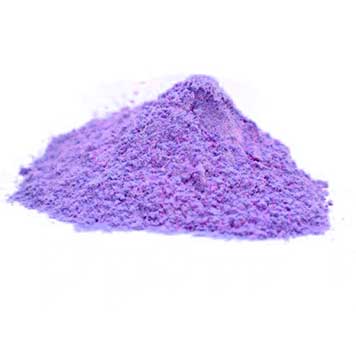
slow release fertilizer
Understanding Slow Release Fertilizers Advantages and Applications
In the pursuit of achieving robust plant growth and improving soil fertility, the use of fertilizers is indispensable. Among the various types of fertilizers available, slow release fertilizers have gained significant attention for their effective and sustainable nutrient delivery systems. This article delves into the characteristics, benefits, and applications of slow release fertilizers, highlighting their importance in modern agriculture and horticulture.
What are Slow Release Fertilizers?
Slow release fertilizers are nutrient formulations designed to release their nutrients gradually over time. Unlike conventional fertilizers that provide nutrients to plants immediately after application, slow release fertilizers ensure a steady supply of nutrients, which aligns more closely with a plant’s growth needs. This is achieved through encapsulation methods, coating technologies, or by utilizing organic materials that break down slowly in the soil.
One of the most common types of slow release fertilizers includes polymer-coated urea, where a polymer coating surrounds the nitrogen source. This coating controls the rate at which moisture penetrates and dissolves the fertilizer, allowing the nitrogen to be released slowly. Other formulations might employ natural materials, such as compost or organic matter, which naturally break down over extended periods.
Benefits of Slow Release Fertilizers
The adoption of slow release fertilizers comes with a multitude of benefits that can positively impact agricultural productivity and environmental sustainability.
1. Nutrient Efficiency The slow and steady release of nutrients ensures that plants receive a consistent supply, reducing the likelihood of nutrient leaching—a common problem with quick-release fertilizers. By minimizing nutrient loss into the environment, slow release fertilizers promote efficient nutrient uptake by plants.
2. Reduced Risk of Burn Traditional fertilizers can sometimes burn plants due to the high concentration of nutrients that are available instantly. Slow release fertilizers mitigate this risk by providing nutrients in more manageable quantities, allowing for optimal root uptake and minimizing the chances of plant damage.
3. Enhanced Soil Health Using slow release fertilizers can improve soil structure and health. As these fertilizers break down slowly, they can enhance the organic matter content in the soil, leading to better moisture retention and improved microbial life, both of which contribute to a thriving ecosystem.
slow release fertilizer

4. Convenience Farmers and gardeners appreciate the reduced frequency of application that slow release fertilizers provide. With longer-lasting effects, there is less need for repeated applications—saving time, labor, and costs associated with fertilizer management.
5. Environmental Consideration The gradual release minimizes environmental impact, reducing the risk of runoff into water bodies, which contributes to eutrophication—a condition caused by nutrient overload that leads to harmful algal blooms.
Applications in Agriculture and Horticulture
Slow release fertilizers find application in a variety of settings
- Crop Production In large-scale agriculture, slow release fertilizers are utilized to provide essential nutrients throughout the growing season, particularly for crops with high nutrient demands.
- Landscaping and Gardening Gardeners often use slow release fertilizers for landscape plants, perennials, and annuals to ensure long-lasting nutrition without the hassle of frequent feeding.
- Container Gardening For plants growing in pots, where nutrient leaching can occur more rapidly, slow release fertilizers offer a practical solution to maintain optimal nutrition levels within a confined soil volume.
- Turf Management In maintaining lawns and turf, slow release fertilizers help in achieving lush and healthy grass while reducing the frequency of fertilization applications.
Conclusion
Slow release fertilizers represent a crucial advancement in the field of plant nutrition. Their ability to provide a steady supply of nutrients not only supports plant health and growth but also aligns with sustainable agricultural practices. As the world faces challenges related to food security and environmental preservation, the use of slow release fertilizers will continue to play a vital role in promoting efficient and responsible farming practices. Embracing these innovative products can lead to healthier crops, improved soil conditions, and a more sustainable approach to agriculture.
-
Aluminum Hydroxide: Quality Gels & Dried Gel AntacidNewsAug.31,2025
-
Buy High-Quality Trichloroisocyanuric Acid for Sale | TCCA 90% SupplierNewsAug.30,2025
-
Pure Sodium Dichloroisocyanurate Dihydrate | Powerful DisinfectantNewsAug.29,2025
-
Industrial Chemicals: Quality & Purity for Every IndustryNewsAug.28,2025
-
Nitrile Rubber Honoring Strict Production StandardsNewsAug.22,2025
-
Aspartame Ingredients Honoring Food Safety ValuesNewsAug.22,2025
-
Fertilizer for Balanced Plant NutritionNewsAug.22,2025
Hebei Tenger Chemical Technology Co., Ltd. focuses on the chemical industry and is committed to the export service of chemical raw materials.
-

view more DiethanolisopropanolamineIn the ever-growing field of chemical solutions, diethanolisopropanolamine (DEIPA) stands out as a versatile and important compound. Due to its unique chemical structure and properties, DEIPA is of interest to various industries including construction, personal care, and agriculture. -

view more TriisopropanolamineTriisopropanolamine (TIPA) alkanol amine substance, is a kind of alcohol amine compound with amino and alcohol hydroxyl, and because of its molecules contains both amino and hydroxyl. -

view more Tetramethyl Thiuram DisulfideTetramethyl thiuram disulfide, also known as TMTD, is a white to light-yellow powder with a distinct sulfur-like odor. It is soluble in organic solvents such as benzene, acetone, and ethyl acetate, making it highly versatile for use in different formulations. TMTD is known for its excellent vulcanization acceleration properties, which makes it a key ingredient in the production of rubber products. Additionally, it acts as an effective fungicide and bactericide, making it valuable in agricultural applications. Its high purity and stability ensure consistent performance, making it a preferred choice for manufacturers across various industries.





